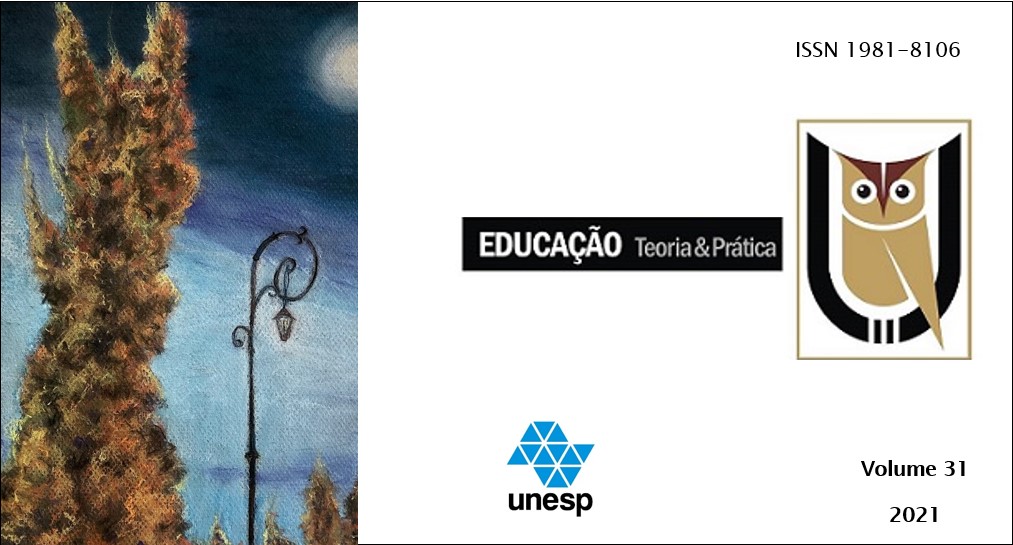Conflicts, incivilities and violences: challenges within school
DOI:
https://doi.org/10.18675/1981-8106.v31.n.64.s15228Keywords:
Incivility at School. School Violence. Educators' Speeches.Abstract
This article aimed to understand how the school community – in general – and the teachers and the management team – in particular – have dealt with issues related to conflicts, incivilities and violence within the school. The investigation, of a quanti-qualitative character whose form is descriptive-analytical, collected, organized and analyzed the data from the perspective of the French Discourse Analysis, according to Orlandi (1999). The empirical research was carried out in two state public schools of Elementary Education Final Years in two medium-sized cities in the interior of São Paulo. There were four categories of analysis: verbal and physical violence at school; students' lack of interest and indiscipline; conflicting situations and the power relationship in the school space; and, educators' speeches about school practices and procedures. It was concluded that there is a duality in the school dynamics: when the educator makes use of his authority and establishes a hierarchical relationship, conflicts and violence inevitably happen; and when trying to understand the differences in the situations between the subjects, with tolerance, strengthens the relationships and reformulates common rules for possible adjustments.
References
ABRAMOVAY, M.; WAISELFISZ, J. J.; ANDRADE, C. C.; RUA, M. G. Gangues, galeras, chegados e rappers: juventude, violência e cidadania nas cidades da periferia de Brasília. Rio de Janeiro: Garamond, 2004.
AQUINO, J. G. A indisciplina e a escola atual. Revista da Faculdade de Educação, São Paulo, 24, n. 2, dez. 1998.
BAKHTIN, M. Os gêneros do discurso. In: BAKHTIN, M. Estética da criação verbal. São Paulo: Martins Fontes, 2003.
BOURDIEU, P. O Poder Simbólico. Tradução de Fernando Thomaz. Rio de Janeiro. Editora Bertrand Brasil. 1989.
CAMACHO, L. M. Y. As sutilezas das faces da violência nas práticas escolares de adolescentes. Educação e Pesquisa, São Paulo, v. 27, n. 1, p. 123-140, jan./jun. 2001.
CARVALHO, A.; BENAVENTE, A. Conflitos na Escola: Textos e Contextos. Educação, Cultura e Sociedade, Porto, n. 3, set. 2009.
CHARLOT, B. A violência na escola: como os sociólogos franceses abordam esta questão. Sociologias, Porto Alegre, ano 4, n. 8, p 432-443, jul./dez 2002, 2002.
DEBARBIEUX, E. Violência nas escolas: divergências sobre palavras e um desafio político. In: DEBARBIEUX,E.; BLAYA, C. (org.). Violência nas Escolas e Políticas Públicas. Brasília (DF): Unesco, 2002. p. 59-92.
FOUCAULT, M. Vigiar e Punir. Petrópolis: Vozes, 1977.
GUIMARÃES, Á. M. Indisciplina e violência : a ambigüidade dos conflitos na escola. In: AQUINO, J. G. (org.) Indisciplina na escola: alternativas teóricas e práticas. 11. ed. São Paulo: Summus, 1996. p. 73-82.
LEMBO, J. M. Porque falham os professores. São Paulo: EPU, 1975.
MICHAUD, Y. A violência. Tradução L. Garcia. São Paulo: Editora Ática, 2001.
MINAYO, M. C. S.; ASSIS, S. G.; SOUZA, E. R.; NJAINE, K.; DESLANDES, S. F.; SILVA, C. M. F. P.; FRAGA, P. C. P.; GOMES, R.; ABRAMOVAY, M.; WAISELFISZ, J.; MONTEIRO, M. C. N. Fala galera: juventude, violência e cidadania na cidade do Rio de Janeiro. Rio de Janeiro: Garamond, 1999.
MOSER, G. A agressão. São Paulo, SP: Ática, 1991.
NJAINE, K.; MINAYO, M. C. S. Violência na escola: identificando pistas para a prevenção. Revista Interface: Comunicação, Saúde, Educação, v. 7, n. 13, p. 119-134, 2003.
ORLANDI, E. Análise de Discurso, princípios e procedimentos. Campinas: Pontes, 1999.
PINHEIRO, P. S.; ALMEIDA, G. A. Violência urbana. São Paulo: Publifolha, 2003.
SALLES, L. M. F.; FONSECA, D. C.; ADAM, J. M. Sobre violência e violência na escola: considerações a partir da literatura na área. In: LUIZ, M. C. (org.). Conselho Escolar e as possibilidades de diálogo e convivência: o desafio da violência na escola. São Carlos: EdUFSCar, p. 39-76, 2016.
VELHO, G. Violência, reciprocidade e desigualdade: Uma perspectiva antropológica. In: VELHO, G.; ALVITO, M. (ed.). Cidadania e violência. Rio de Janeiro: Editora da Universidade Federal do Rio de Janeiro, 2000. p.11-25.
ZALUAR, A. Violência Intra e Extramuros. Revista Brasileira de Ciências Sociais, v. 16, n. 45, 2001.
WAISELFISZ, J.J. Mapa da violência 2012: crianças e adolescentes do Brasil. CEBELA – Centro Brasileiro de Estudos Latino-Americanos. 1. ed. Rio de Janeiro, 2012.
WIERVIORKA, M. O novo paradigma da violência. Tempo Social. Revista de Sociologia da USP, v. 9, n. 1, p. 5-41, 1997.
Downloads
Published
How to Cite
Issue
Section
License
Authors who publish in this journal agree to the following terms:
a) Authors assign copyright to the journal, with the work simultaneously licensed under the Creative Commons Attribution License that allows sharing of the work with acknowledgment of authorship and publication in this journal.
b) The policy adopted by the Editorial Committee is to assign copyright only after a period of 30 months from the date of publication of the article. After this time, authors interested in publishing the same text in another work must send a letter to the Editorial Committee requesting the release of the assignment of copyright and wait for a response.
c) This journal provides public access to all its content, since this allows greater visibility and reach of published articles and reviews. For more information on this approach, visit the Public Knowledge Project, a project that developed this system to improve the academic and public quality of research, by distributing OJS as well as other software to support the public access publication system to academic sources. The names and email addresses on this website will be used exclusively for the purposes of the journal and will not be available for other purposes. This journal provides open any other party  This work is licensed under a Creative Commons License
This work is licensed under a Creative Commons License











